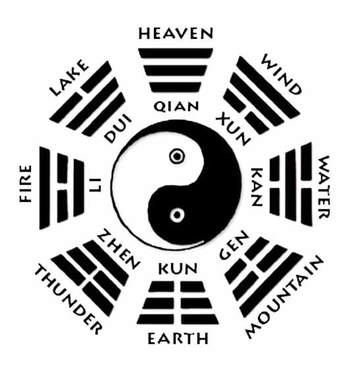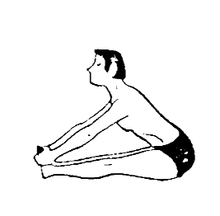Heaven and Earth Postures: The Taoist Balance of Opposites
|
Human life — an inseparable piece of an ever-moving cycle and infinite whole. This is one of the central beliefs of Taoism. Each phase of this cycle of birth, growth, maturity, decay, and death, is represented by a corresponding element, as we explored in the previous blog. This cycle of the five elements inspired the Taoist yoga postures that make up the first two levels of SunDo practice. By centering our energy, these initial longer-held postures prepare us to explore the balance that comes from the third phase of SunDo. During the postures of SunDo set three, we connect to the realms of heaven and earth, or what we commonly know as yin and yang. |
Taoist balance between heaven and earth
Taoists in their practice pursue the Tao, a term that lacks simple definition, but might be thought of as an endless supply of universal energy or that which created all. The Tao birthed heaven and earth, heaven and earth gave us the five elements, and the elements gave us life.
A traditional Taoist poem holds the insight, “Heaven and Earth have the same roots as me, all things share the same body with me. The human body is the micro-cosmos, Heaven and Earth are the macro-cosmos.” We exist in mutual dependence with every other piece of the universe, and this must necessarily be the case.
Taoists in their practice pursue the Tao, a term that lacks simple definition, but might be thought of as an endless supply of universal energy or that which created all. The Tao birthed heaven and earth, heaven and earth gave us the five elements, and the elements gave us life.
A traditional Taoist poem holds the insight, “Heaven and Earth have the same roots as me, all things share the same body with me. The human body is the micro-cosmos, Heaven and Earth are the macro-cosmos.” We exist in mutual dependence with every other piece of the universe, and this must necessarily be the case.
|
At base, Taoism is a philosophy of balance. Nature gives us what we need to live, but it also depends on our sense of responsibility to ensure its survival, and, by extension, our own. Taoism’s yin and yang is a constant reminder of this. We cannot hope to live in harmony if we are actively doing harm to the environment around us. If we view ourselves as removed from the natural process and if we selfishly see nature as something to plunder, we will bring about a world that is hostile and unforgiving to us. |
In response, Taoism embraces the “natural way” (renwu ziran) of things. This becomes easy when we, ourselves, once again return to our own natural way — when do not seek contentment through excess, overabundance, domination of others, and material needs, but rather, take care of our bodies, treat others with kindness, and pursue self-betterment.
The third stage of SunDo practice focuses on honing this sense of balance and natural being.
The third stage of SunDo practice focuses on honing this sense of balance and natural being.
|
Taking it to the next level with SunDo “yellow belt” postures SunDo’s roots are in the martial arts with its emphasis on strength and flexibility. In addition to stretching exercises which focus on all joints and connective tissues in the body, practitioners perform intensive breath-centered meditation to cultivate and balance Qi. Those who study the martial arts often view SunDo as the essence of practice - Qi development without the martial aspect. Very powerful energy can be derived from SunDo, but this energy can also be channeled for the healing of body, mind and spirit through Taoist alchemy. SunDo set three, or Yellow Belt postures, are also known as Keon Kon Dan Boup (unification stage). |
Its poses are primarily directed at absorbing, cultivating, and balancing yin Qi and yang Qi in the human body. Through a progression of 23 postures that orient the body to both its grounding on the earth and its aim toward heaven, Yellow Belt Postures:
- Ready the body to store a vast quantity of qi energy in the lower dantian during the next level of practice
- Cultivate yin energy, yang energy, and a blending of the two
- Harmonize and unite these two extremes of energy within the body
- Offer an invigorating exercise regimen together with warmup and cool down sequences
On a deeper level, SunDo practitioners advance along the path of developing mind Qi (mental energies) and spirit Qi. Because the ultimate aim of SunDo is to bring us into accord with the natural way of Tao, all three aspect of body, mind and spirit must be balanced. In connecting with yin and yang concepts of light and dark, we also find in Keon Gon Dan Boup a confrontation of shadow. Through the stillness, physical balance, and controlled breath focus, these poses tap into the unconscious shadows buried deep in the mind and bring them to light. Keon Gon Dan Goub pushes the practitioner to accept the full view of reality without bias — things “as they are” in their natural state.
With this state of openness, the body can absorb yin and yang energy and unlock the path to the deepest calm, vitality, and awareness SunDo, and Taoist yoga as a whole, can offer.
With this state of openness, the body can absorb yin and yang energy and unlock the path to the deepest calm, vitality, and awareness SunDo, and Taoist yoga as a whole, can offer.
Learn more about SunDo Practice. Subscribe to the e-news for blog posts delivered right to your inbox each month!



